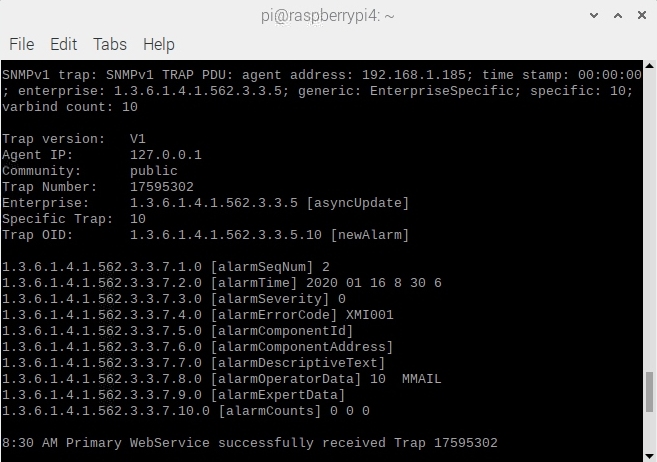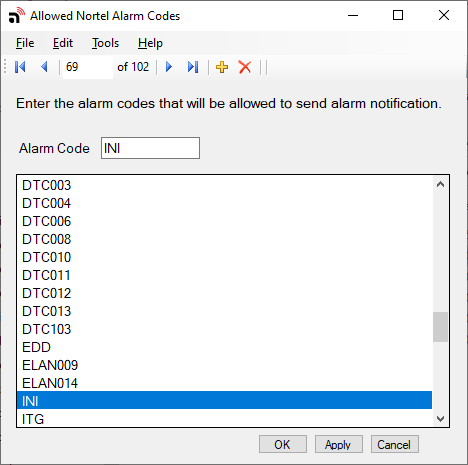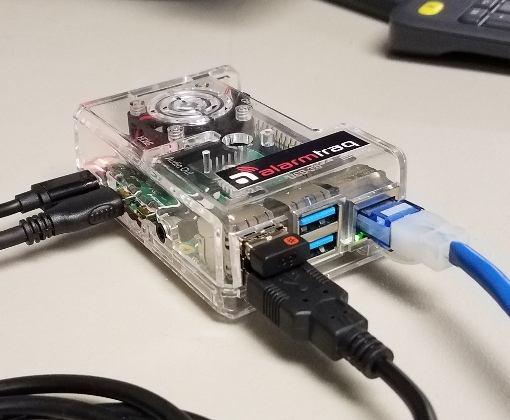Secure alarming for Nortel CS1000
AURORA GATEWAY CS v2 or just agatewayCS for short, provides secure remote alarm monitoring over HTTPS for Avaya/Nortel CS1000 systems. The agatewayCS is deployed as either a Linux or a Windows appliance on the customers local area network.
Error Codes from the CS1000 are sent to the agatewayCS as either:- Direct serial connection from the CS1000 TTY port
- Direct SNMP trap messages from Call Servers, Signaling Servers, and Media Gateways
- Both
When an error code or alarm code is received from CS1000, agatewayCS queries the NortelAlarms.xml dataset for a list of alarm codes to be either allowed or blocked depending on your configuration.
When a valid alarm is received by the agatewayCS, the alarm information is then converted to JSON and included in a secure HTTP Request, which is sent to the AlarmTraq REST API as part of our Secure Alarming Package using Transport Layer Security (TLS) 1.2 as our primary encryption protocol.
TLS 1.2 is a robust and widely adopted cryptographic protocol designed to secure data transmissions over computer networks. By upgrading to TLS 1.2, we have significantly enhanced the security of our communication channels, providing an additional layer of protection against unauthorized access and data breaches.
Pricing starts as little as $75.00 per year for each gateway device when you signup for an annual subscription. For more information see our subscription pricing
Secure remote alarming over HTTPS for Nortel CS1000 and SL-100 systems
click to view larger image
If the error code is to be processed, an HTTP WebRequest containing the alarm variables is POSTED to the AlarmTraq REST API located in your NOC using the most
advanced encryption protocols available.
- Runs on Linux or Windows, from the tiny Raspberry Pi (see above) to a CentOS virtual machine
- Compatable with most USB to serial converters to connect to CS1000 TTY port
- Use of wildcards in the alarm filters to simplify blocking of needless alarms at the source
- Supports alarming from multiple Call Servers, Signaling Servers, and Media Gateways via SNMP
agatewayCS - CS1000 Alarming Gateway (16:08)

Runs as a Linux service
Alarm Filters (BLOCK or ALLOW)
Provides a customizable list of alarm codes and error messages that should be blocked or allowed, preventing excessive or unwanted alarm codes from
being processed. The NortelAlarms.xml table can be configured as either a BLOCKING list or an ALLOW list depending on the configuration
of the AppSettings.xml file.
If configured as BLOCKING and alarm codes match an entry in the NortelAlarms.xml table, they will be ignored (AUD000, TIM000, etc.).
If configured as ALLOW and an alarm code matches an entry in the NortelAlarms.xml table it will be sent to the AlarmTraq API for processing.
In the example below, An entry of INI will allow all INIxxx messages.

Alarm Filters (ALLOW)


